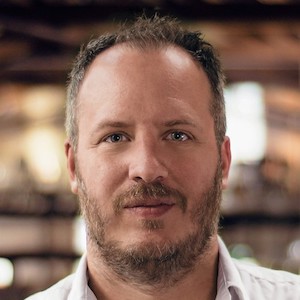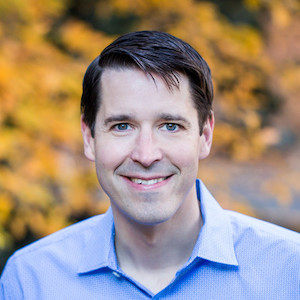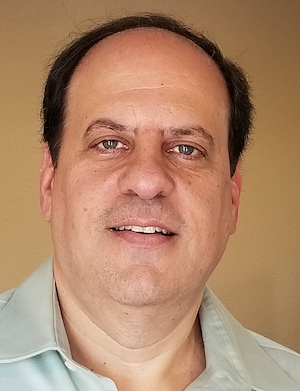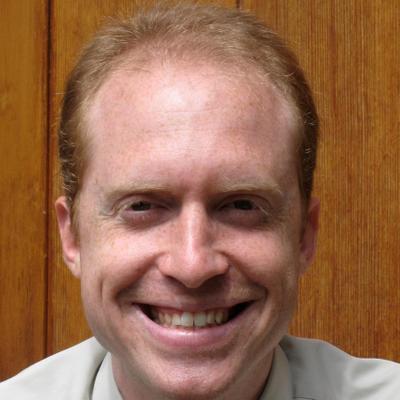Latest News
3 Global Health IT Takeaways You Need to Know - Reflections from ONC 3rd Interoperability Forum
 The Office of the National Coordinator for Health IT (ONC) engages in several global health IT projects from a United States government perspective. ONC works with global counterparts to share experiences, and ensure alignment between global interoperability efforts and the United States' approaches to interoperability. This includes working through worldwide partnerships, bi-lateral and multi-lateral engagements, global networks, and memoranda of understanding. Through these engagements, we focus on advancing common health data standards for global interoperability, enhancing individuals' access to their data, progressing healthcare providers' experiences, and improving factors associated with transparency and competition.
The Office of the National Coordinator for Health IT (ONC) engages in several global health IT projects from a United States government perspective. ONC works with global counterparts to share experiences, and ensure alignment between global interoperability efforts and the United States' approaches to interoperability. This includes working through worldwide partnerships, bi-lateral and multi-lateral engagements, global networks, and memoranda of understanding. Through these engagements, we focus on advancing common health data standards for global interoperability, enhancing individuals' access to their data, progressing healthcare providers' experiences, and improving factors associated with transparency and competition.
- Login to post comments
Getting Started With Pimcore: An Open Source Alternative For Product Information Management
 Product information management (PIM) software enables sellers to consolidate product data into a centralized repository that acts as a single source of truth, minimizing errors and redundancies in product data. This, in turn, makes it easier to share high-quality, clear, and accurate product information across customer touchpoints, paving the way for rich, consistent, readily accessible content that's optimized for all the channels customers use, including websites, social platforms, marketplaces, apps, IoT devices, conversational interfaces, and even print catalogs and physical stores...For years, there have been proprietary products that address some of these needs, like Salsify for data management, Adobe Experience Manager, and SAP Commerce Cloud for experience management, but now there's an open source alternative called Pimcore. Read More »
Product information management (PIM) software enables sellers to consolidate product data into a centralized repository that acts as a single source of truth, minimizing errors and redundancies in product data. This, in turn, makes it easier to share high-quality, clear, and accurate product information across customer touchpoints, paving the way for rich, consistent, readily accessible content that's optimized for all the channels customers use, including websites, social platforms, marketplaces, apps, IoT devices, conversational interfaces, and even print catalogs and physical stores...For years, there have been proprietary products that address some of these needs, like Salsify for data management, Adobe Experience Manager, and SAP Commerce Cloud for experience management, but now there's an open source alternative called Pimcore. Read More »
- Login to post comments
6 remarkable features of the new United Nations open source initiative
 The United Nations wants to make technology, software, and intellectual property available to everyone, including developing countries. Open source and free software are great tools to achieve this goal since open source is all about empowering people and global collaboration while protecting the personal data and privacy of users. So, the United Nations and the open source community share the same values. This new open source strategy and policy is developed by the United Nations Technology Innovation Labs (UNTIL). Last month, we had our first in-person meeting in Helsinki in the UNTIL offices. I find this initiative remarkable for several reasons:
The United Nations wants to make technology, software, and intellectual property available to everyone, including developing countries. Open source and free software are great tools to achieve this goal since open source is all about empowering people and global collaboration while protecting the personal data and privacy of users. So, the United Nations and the open source community share the same values. This new open source strategy and policy is developed by the United Nations Technology Innovation Labs (UNTIL). Last month, we had our first in-person meeting in Helsinki in the UNTIL offices. I find this initiative remarkable for several reasons:
- Login to post comments
Product Vs. Project In Open Source
 The main reason that open source is good for security is that you can see what's going on when there's a problem, and you have a chance to fix it. Or, more realistically, unless you're a security professional with particular expertise in the open source project in which the problem arises, somebody else has a chance to fix it. We hope that there are sufficient security folks with the required expertise to fix security problems and vulnerabilities in software projects about which we care.It's a little more complex than that, however. As an organisation, there are two main ways to consume open source:
The main reason that open source is good for security is that you can see what's going on when there's a problem, and you have a chance to fix it. Or, more realistically, unless you're a security professional with particular expertise in the open source project in which the problem arises, somebody else has a chance to fix it. We hope that there are sufficient security folks with the required expertise to fix security problems and vulnerabilities in software projects about which we care.It's a little more complex than that, however. As an organisation, there are two main ways to consume open source:
- Login to post comments
It's Time To Pay The Maintainers
 Earlier this year, Tidelift conducted a survey of over 1,200 professional software developers and open source maintainers. We found that 83% of professional software development teams would be willing to pay for better maintenance, security, and licensing assurances around the open source projects they use. Meanwhile, the same survey found that the majority of open source maintainers receive no external funding for their work, and thus struggle to find the time to maintain their open source projects. So, to put what we learned succinctly...It's time to pay the maintainers. Not just because they deserve to be compensated for their amazing work creating the software infrastructure our society relies on (they do!). But also because there is a ready-made market of professional developers willing to pay for assurances they are in the best position to provide. Here's an idea for how to do it...
Earlier this year, Tidelift conducted a survey of over 1,200 professional software developers and open source maintainers. We found that 83% of professional software development teams would be willing to pay for better maintenance, security, and licensing assurances around the open source projects they use. Meanwhile, the same survey found that the majority of open source maintainers receive no external funding for their work, and thus struggle to find the time to maintain their open source projects. So, to put what we learned succinctly...It's time to pay the maintainers. Not just because they deserve to be compensated for their amazing work creating the software infrastructure our society relies on (they do!). But also because there is a ready-made market of professional developers willing to pay for assurances they are in the best position to provide. Here's an idea for how to do it...
- Login to post comments
Instead of Medicare for All, How about VA for All?
 I wonder -- why would people be calling for a new system that would still have thousands of private hospitals/facilities and millions of healthcare professionals, practicing FFS medicine using countless systems and data structures? In short, why aren't people calling for VA for All? Like Medicare, the VA -- more especially, its healthcare component, the Veterans Health Administration -- is charged with providing healthcare to a designed population, in this case, veterans. Unlike Medicare, though, it does so as an integrated health system (by far the largest in the U.S.), with 170 VA Medical Centers, over a thousand outpatient facilities, and somewhere over 100,000 physicians...it offers some of the finest care in the world. It offers a range of services that Medicare can only dream of, and it does so at, it is believed, lower costs than private coverage or even Medicare. Plus, it also was an innovator in electronic health records and is today in telehealth. What's not to like?
I wonder -- why would people be calling for a new system that would still have thousands of private hospitals/facilities and millions of healthcare professionals, practicing FFS medicine using countless systems and data structures? In short, why aren't people calling for VA for All? Like Medicare, the VA -- more especially, its healthcare component, the Veterans Health Administration -- is charged with providing healthcare to a designed population, in this case, veterans. Unlike Medicare, though, it does so as an integrated health system (by far the largest in the U.S.), with 170 VA Medical Centers, over a thousand outpatient facilities, and somewhere over 100,000 physicians...it offers some of the finest care in the world. It offers a range of services that Medicare can only dream of, and it does so at, it is believed, lower costs than private coverage or even Medicare. Plus, it also was an innovator in electronic health records and is today in telehealth. What's not to like?
- Login to post comments
ONC Patient Matching Project Moving Forward...Slowly
 Last week, the Office of the National Coordinator for Health Information Technology (ONC) released the final report from its Patient Matching, Aggregation, and Linking (PMAL) Project, as well as an additional report describing a pilot project to test the Patient Demographic Data Quality Framework (PDDQ) to Support Patient Matching that was released several years ago. Funded from June 2015 through September 2018 by the HHS Office of the Assistant Secretary for Planning and Evaluation (ASPE) through the Patient-Centered Outcomes Research (PCOR) Trust Fund, PMAL was one of the activities I described in an earlier post. The Final Report reviews the four challenged of patient matching and linking that the PMAL project attempted to address...
Last week, the Office of the National Coordinator for Health Information Technology (ONC) released the final report from its Patient Matching, Aggregation, and Linking (PMAL) Project, as well as an additional report describing a pilot project to test the Patient Demographic Data Quality Framework (PDDQ) to Support Patient Matching that was released several years ago. Funded from June 2015 through September 2018 by the HHS Office of the Assistant Secretary for Planning and Evaluation (ASPE) through the Patient-Centered Outcomes Research (PCOR) Trust Fund, PMAL was one of the activities I described in an earlier post. The Final Report reviews the four challenged of patient matching and linking that the PMAL project attempted to address...
- Login to post comments
How to Open Source Your Academic Work in 7 Steps
 Open source technology and academia are the perfect match. Find out how to meet tenure requirements while benefiting the whole community. Academic work fits nicely into the open source ethos: The higher the value of what you give away, the greater your academic prestige and earnings. Professors accomplish this by sharing their best ideas for free in journal articles in peer-reviewed literature. This is our currency, without a strong publishing record not only would our ability to progress in our careers degrade, but even our jobs could be lost (and the ability to get any other job). The following seven steps provide the best practices for making an academic's work open source...
Open source technology and academia are the perfect match. Find out how to meet tenure requirements while benefiting the whole community. Academic work fits nicely into the open source ethos: The higher the value of what you give away, the greater your academic prestige and earnings. Professors accomplish this by sharing their best ideas for free in journal articles in peer-reviewed literature. This is our currency, without a strong publishing record not only would our ability to progress in our careers degrade, but even our jobs could be lost (and the ability to get any other job). The following seven steps provide the best practices for making an academic's work open source...
- Login to post comments
How Do Hospitals Know What To Do When Hurricanes Approach?
 We all expect hospitals to be open and operating when we need them, but extreme weather events like hurricanes are a strain on resources and pose significant challenges for hospitals. Closing a hospital is an extreme action, but several hospitals in Florida, Georgia and South Carolina did just that before the arrival of Hurricane Irma in 2017.With more than 300 hospitals and a higher share of older adults than any other state, emergency plans for Florida’s hospitals were a critical issue facing emergency planners during those storms. This is true now as well as Hurricane Dorian approaches the state.
We all expect hospitals to be open and operating when we need them, but extreme weather events like hurricanes are a strain on resources and pose significant challenges for hospitals. Closing a hospital is an extreme action, but several hospitals in Florida, Georgia and South Carolina did just that before the arrival of Hurricane Irma in 2017.With more than 300 hospitals and a higher share of older adults than any other state, emergency plans for Florida’s hospitals were a critical issue facing emergency planners during those storms. This is true now as well as Hurricane Dorian approaches the state.
- Login to post comments
ONC's 3rd Interoperability Forum: Not Much to Report
 On August 21 and 22, 2019 the Office of the National Coordinator for Health Information Technology (ONC) held its third Interoperability Forum in Washington, DC. More than 600 individuals participated in person with many others viewing the general sessions via webinar. The conference began and ended with half-day plenary sessions while providing five tracks with smaller sessions in between. I attended the Health Information Exchange (HIE)/Community-based Information Exchange (CIE) breakout session on both days. The plenaries...focused on the current state and the future state of interoperability.
On August 21 and 22, 2019 the Office of the National Coordinator for Health Information Technology (ONC) held its third Interoperability Forum in Washington, DC. More than 600 individuals participated in person with many others viewing the general sessions via webinar. The conference began and ended with half-day plenary sessions while providing five tracks with smaller sessions in between. I attended the Health Information Exchange (HIE)/Community-based Information Exchange (CIE) breakout session on both days. The plenaries...focused on the current state and the future state of interoperability.